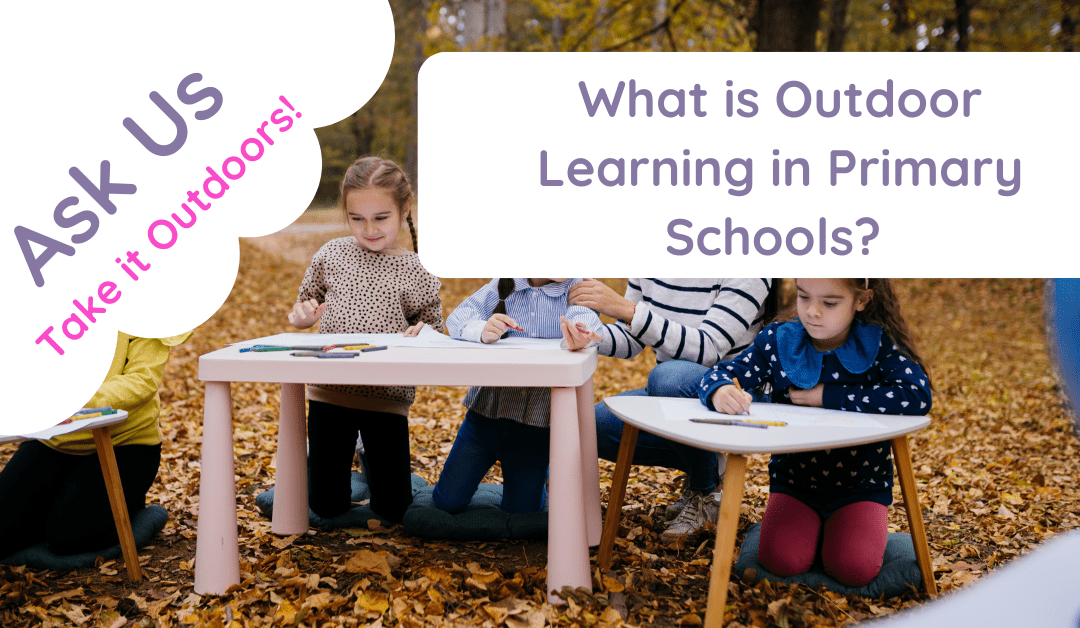What Is Outdoor Learning in Primary Schools?
Outdoor learning in primary schools involves taking children outside the traditional classroom setting to engage in structured and unstructured activities that promote holistic development. This educational approach utilises natural environments to create dynamic, hands-on learning experiences that enhance physical, cognitive, emotional, and social growth. Outdoor learning is not only about playing outside; it integrates various subjects into the outdoor context, making learning more relevant and engaging. In this blog post, we will explore what outdoor learning in primary schools entails, its benefits, and how it can be effectively implemented.
Understanding Outdoor Learning in Primary Schools
Outdoor learning takes education beyond the four walls of the classroom, utilising school grounds, local parks, gardens, and woodlands as learning environments. Lessons can range from planned curriculum-based activities to spontaneous explorations of nature, encouraging students to interact with their surroundings and learn through experience.
External Resource: Learning Through Landscapes – What Is Outdoor Learning?
Benefits of Outdoor Learning in Primary Schools
1. Enhanced Engagement
The natural environment stimulates curiosity and interest, making learning more engaging for students. Outdoor settings provide a refreshing change from traditional classrooms, capturing students’ attention and enthusiasm.
External Resource: Edutopia – The Benefits of Outdoor Learning
2. Hands-On Learning
Outdoor learning promotes experiential education, allowing students to engage in practical, hands-on activities. This method helps students understand complex concepts through direct experience.
External Resource: Harvard Graduate School of Education – Benefits of Experiential Learning
3. Physical Wellbeing
Being outdoors encourages physical activity, which is essential for children’s growth and development. Activities like running, climbing, and exploring help improve motor skills, coordination, and overall fitness.
External Resource: NHS – Physical Activity Guidelines for Children
4. Emotional and Mental Health
Spending time in nature has been shown to reduce stress and anxiety in children. Natural settings provide a calming environment that supports emotional regulation and mental health.
External Resource: Mind – Benefits of Nature for Mental Health
5. Social Skills
Outdoor learning often involves group activities that require cooperation, communication, and teamwork. Students develop important social skills as they interact with their peers in a natural setting.
External Resource: Edutopia – Social and Emotional Learning
6. Environmental Awareness
Learning outdoors fosters a connection with nature and teaches students about environmental stewardship. They develop an appreciation for the natural world and learn the importance of protecting it.
External Resource: WWF – Connecting Kids with Nature
Implementing Outdoor Learning in Primary Schools
1. Planning and Preparation
Identify suitable outdoor spaces that are safe and accessible. Plan activities that align with educational goals and consider the needs of all students.
External Resource: Outdoor Classroom Day – Planning Tips
2. Curriculum Integration
Integrate outdoor learning into the existing curriculum. Use outdoor settings to teach various subjects, such as science, maths, literacy, and art, in a holistic and interconnected manner.
External Resource: Scholastic – Integrating Outdoor Learning
3. Safety Considerations
Ensure the outdoor environment is safe for students. Conduct regular safety checks, establish clear rules, and supervise activities to prevent accidents.
External Resource: NSPCC – Outdoor Safety Tips
4. Resources and Materials
Provide appropriate resources and materials for outdoor activities. This might include weather-appropriate clothing, tools for exploration, and educational props.
External Resource: Eco-Schools – Outdoor Learning Resources
5. Engaging Activities
Design engaging and age-appropriate activities that make the most of the outdoor environment. Incorporate sensory experiences, physical challenges, and exploratory tasks.
External Resource: Project Learning Tree – Outdoor Learning Activities
Practical Activities for Outdoor Learning in Primary Schools
1. Nature Walks
Activity: Take students on nature walks to explore and observe their surroundings. Discuss different plants, animals, and natural features they encounter.
External Resource: National Wildlife Federation – Nature Walk Activities
2. Outdoor Science Experiments
Activity: Conduct science experiments outdoors, such as studying plant growth, observing weather changes, or examining soil samples.
External Resource: Science Sparks – Outdoor Science Experiments
3. Maths in Nature
Activity: Use natural materials like stones, leaves, and sticks to teach maths concepts such as counting, sorting, and measuring. Create patterns and shapes with these materials.
External Resource: NRICH – Outdoor Maths Activities
4. Art and Creativity
Activity: Encourage students to create art using natural materials. Activities can include leaf rubbings, stick sculptures, and nature-inspired drawings.
External Resource: The Artful Parent – Nature Art Projects
5. Storytelling and Literacy
Activity: Use the outdoor setting for storytelling sessions or creative writing exercises. Students can write poems, stories, or journal entries inspired by nature.
External Resource: Reading Rockets – Outdoor Literacy Activities
Recommended Resources from Muddy Puddle Teacher
To support outdoor learning in primary schools, Muddy Puddle Teacher offers a variety of resources:
- Outdoor Learning Guides
- Environmental Education Resources
- Health Benefits of Outdoor Learning
- Sustainable Classroom Activities
- Teamwork Activities
Conclusion
Outdoor learning in primary schools is a powerful educational approach that offers numerous benefits for students. By integrating outdoor activities into the curriculum, educators can create enriching and engaging learning experiences that promote physical, cognitive, emotional, and social development. Implementing outdoor learning requires careful planning, but the rewards are immense. Embrace the natural environment as a classroom and watch your students thrive as they explore, discover, and learn.


